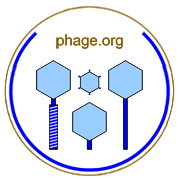

Clearance of a bacterial lawn or, especially, failure of a bacterial lawn to substantially develop as a consequence of substantial phage-induced bacterial lysis.
Confluent lysis occurs when too many phage particles are plated (or, more precisely, too many plaque-forming units). The result is formation of sufficient numbers of plaques that there is no delineation between their borders. Another perspective on confluent lysis is that it is a degree of clearing that is equivalent to that seen with spotting, though up to the entire plate can be involved due to mixture of phages with bacteria prior to bacteria application to a plate.
Note that one means by which phage stocks may be prepared in fact involves phage-bacterial interaction as it occurs on a plate, a so-called plate lysate, and successful phage propagation in this case generally will result in confluent lysis. Alternatively, dripping of condensation onto a bacterial lawn can result in sufficiently rapid phage diffusion within the droplet, prior to its drying, that again confluent lysis can occur, though generally not across the entire plate.
Stent (1963), p. 182, states: "The multiplication of the phages on this plate produces 105 plaques, so that after incubation the entire surface of this plate will consist of nothing but plaques, or show confluent lysis. However, on such a confluent lysis plate there will generally remain a few bacterial colonies, which can be picked and restreaked through several passages on fresh nutrient agar to free the cells from any contaminating [phages] carried over from the original confluent lysis plate.” (Emphasis in original)
For more on this topic, see Wikipedia, Google, and PubMed. Contact web master. Return to terms.